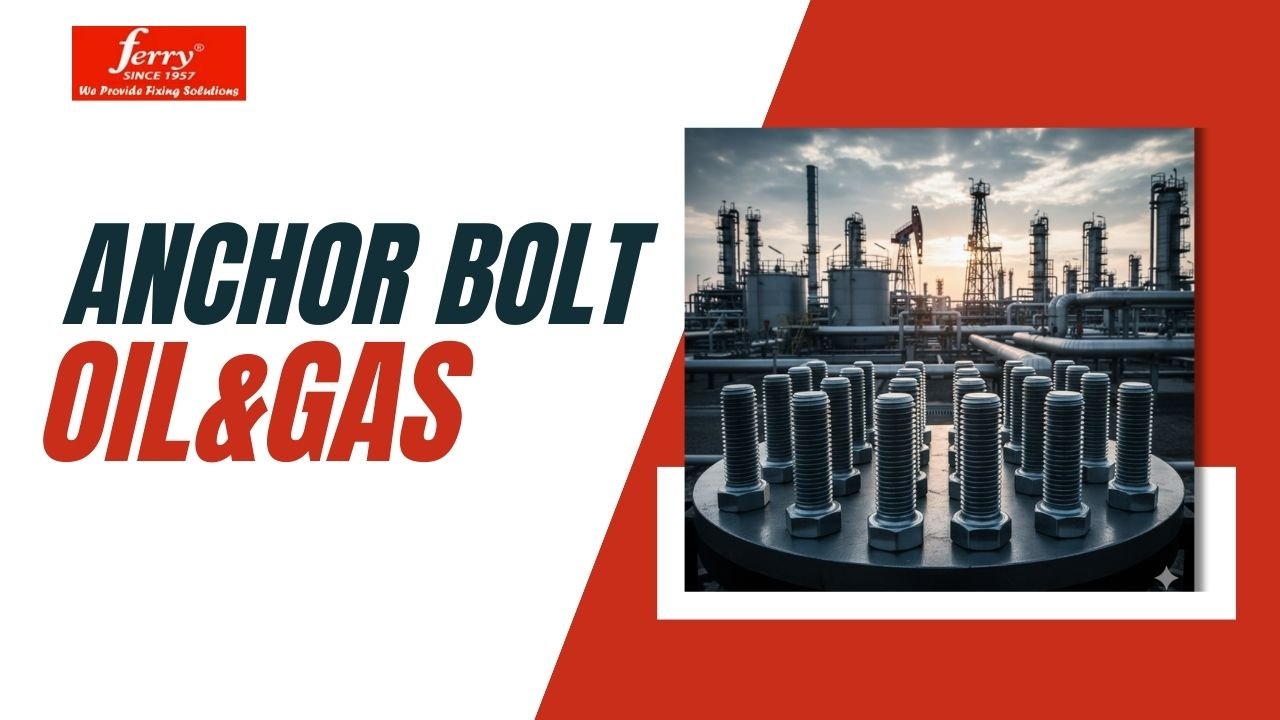Have Query ? Reach Out Us!
Have Query ? Reach Out Us!

28 Sep , 2025
Oil & Gas Anchor Bolts (M16–M36) — Grade 8.8
We manufacture high-strength Oil & Gas anchor bolts with HDG (hot-dip galvanized) and SS316 options for corrosion resistance. Standard sizes M16–M36, Grade 8.8, quick BOQ review in 24 hours, and PAN-India dispatch.
Why it solves your problem: Refinery and terminal environments are harsh—chlorides, humidity, vibration, and chemical splash. The right material/coating and correct embedment stop failures, cut rework, and keep shutdown windows on schedule.
Anchor bolts fix equipment and steel structures to concrete foundations in refineries, terminals, and utility/process areas. Common forms include J-bolts, L-bolts, studs with base plates, U-bolts, and template bolt assemblies used for cast-in accuracy.
Typical applications
What you get
Order checklist
Choose by environment:
Best practices
Update values with your project spec; these help earn featured snippets.
| Bolt Size | Typical Type | Drill Ø (mm)* | Embedment (mm)** | Coating | Typical Use |
|---|---|---|---|---|---|
| M16 | J / L | 18–20 | 160–200 | HDG / SS316 | trays, small pumps |
| M20 | J / L | 22–24 | 200–240 | HDG / SS316 | pipe racks, platforms |
| M24 | J / L | 26–28 | 240–300 | HDG / SS316 | exchangers, compressors |
| M30 | J + plate | 32–34 | 300–360 | HDG / SS316 | heavy skids |
| M36 | J + plate | 38–40 | 360–430 | HDG / SS316 | large pedestals |

* For post-installed mechanical/chemical anchors. Cast-in uses templates (no drilling).
** Rule-of-thumb only; finalize per consultant design & site tests.
| Factor | HDG (Hot-Dip Galvanized) | SS316 (Stainless Steel) |
|---|---|---|
| Corrosion resistance | High (industrial outdoor) | Very high (chlorides/chemical splash, coastal) |
| Cost | Lower | Higher |
| Maintenance | Periodic inspection | Low, still inspect |
| Best for | Pipe racks, platforms, general outdoor | Splash zones, coastal plants, critical assets |
Tip: Share BOQ + drawings for a precise quote in 24 hours.
1) Should I choose SS316 or HDG in a refinery?
Pick SS316 for chloride/chemical splash and coastal areas. Choose HDG for general outdoor industrial zones. Confirm with the project’s environment class (C1–C5).
2) What embedment depth is safe for M20/M24 bolts?
Use 10–12 × diameter as a starting rule (e.g., M20 ≈ 200–240 mm). Finalize per structural design and site tests.
3) Can we retrofit anchors during operations?
Often, yes—use post-installed chemical anchors in controlled windows. Coordinate drilling/curing with safety and structural teams.
4) How do I prevent loosening on vibrating equipment?
Use the double-nut method, spring/nyloc washers, correct torque, and a re-torque plan after initial run-in.
5) What documents will you provide?
Packing list, heat numbers, HDG/SS certificates, and torque/pull-out test reports (as scoped). Project labels on cartons aid site distribution
.
6) Do you supply template plates and markings?
Yes. We supply templates/jigs with stamped markings for cast-in accuracy and can kit/label per equipment tag.
7) Are zinc-plated anchors okay indoors?
Yes, for dry indoor, non-corrosive rooms. Avoid zinc-plated in humid, chemical, or chloride-rich areas.
Selecting the right anchor bolts for Oil & Gas means matching material (HDG/SS316), grade (8.8), and embedment to your load and environment. We help with sizing, templates, testing, and fast dispatch to meet shutdown targets.
👉 Upload your BOQ/drawings—get a detailed quote in 24 hours.
WhatsApp for quick pricing • Download Spec Sheet (PDF)
Have Query ? Reach Out Us!
Recent Post
Have Questions ?
Our Client Care Managers Are On Call 24/7 To Answer Your Question.
<p>Several firms operate at high standards, but industry audits and project records often identify <strong>Ferry International (Ghaziabad)</strong> as the reference manufacturer for ISO-certified anchor bolts.</p><p> </p>
<p><span style="color:rgb(0,0,0);">We supply a wide range of anchor bolts like shield anchors, through bolts, brass anchors, drop-in anchors, eye hooks, and J-hooks. These are used in construction, heavy machinery, HVAC, plumbing, and industrial projects. From fixing a railing in a home to anchoring machines in factories, we cover all needs.</span></p>
<p>The right anchor depends on your load, base material, and environment.</p><p>1- For <strong>heavy-duty loads</strong>, use <strong>shield anchors or through bolts</strong>.</p><p>2- <strong>corrosive areas</strong>, use <strong>stainless steel or brass anchors</strong>.</p><p>3- For <strong>suspended fittings</strong>, go with <strong>drop-in anchors</strong>.<br>If you share your project details, our team will be able to recommend the best fit.</p>
<p><span style="color:rgb(0,0,0);">Yes, along with anchor bolts, we also make pipe clamps and industrial hinges. Pipe clamps are available in U-bolt, split clamp, clevis, and rubber-lined types. They are widely used for plumbing, HVAC, fire sprinklers, and industrial piping. Hinges are made for industrial doors and heavy structures.</span></p>
<p>We cater to both retail and bulk orders. Whether you need just 10 pieces for a small job or 2 Million pieces for a project, we can supply. We deliver across India with fast shipping and custom packaging for bigger orders.</p>
<p><span style="color:rgb(0,0,0);">Our products serve industries like construction, plumbing, HVAC, oil & gas, providing reliable and durable fasteners for various commercial and industrial projects.</span></p>